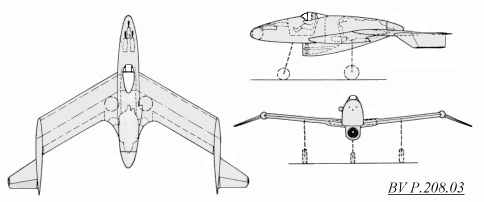in a lighter vein, let us not forget the CAPRONI-MORONI C2 "SCUD" EXPERIMENTAL FIGHTER

When the tide of war turned against it, Fascist Italy turned with the tide.
The C2, or "SCUD," was one direct result. The engineers of Aeronautico Piccolino Abagano Elari Quattori in Turin were charged with designing an aircraft of modern fighter type that could, should word come in mid-air of another change in Italian allegiance, instantly reverse course and become part of the now friendly force.
Thus the unique two-engine configuration, central cockpit with swivel seat and dual controls facing fore and aft.
Time for the SCUD (mean "Scuderia con curso il travala," or "turncoat") to switch directions and sides was set at less than two minutes from a top speed of 265 mph by air force consultants.
This performance criterion was never tested, much less met, since pilots refused to attempt it, except on the ground with an ambulance close by.
One pilot did take the sole SCUD prototype aloft, but once airborne decided to visit his mother in Salerno and wrecked the craft crash-landing on a nearby beach.
The SCUD was painted gold by artisans formerly employed in upkeep of the Sistine Chapel.
A remarkable feature of the plane, considering its fighter designation, was its total lack of armament.
The designers successfully resisted all attempts to ruin its unbroken lines with ugly gun

When the tide of war turned against it, Fascist Italy turned with the tide.
The C2, or "SCUD," was one direct result. The engineers of Aeronautico Piccolino Abagano Elari Quattori in Turin were charged with designing an aircraft of modern fighter type that could, should word come in mid-air of another change in Italian allegiance, instantly reverse course and become part of the now friendly force.
Thus the unique two-engine configuration, central cockpit with swivel seat and dual controls facing fore and aft.
Time for the SCUD (mean "Scuderia con curso il travala," or "turncoat") to switch directions and sides was set at less than two minutes from a top speed of 265 mph by air force consultants.
This performance criterion was never tested, much less met, since pilots refused to attempt it, except on the ground with an ambulance close by.
One pilot did take the sole SCUD prototype aloft, but once airborne decided to visit his mother in Salerno and wrecked the craft crash-landing on a nearby beach.
The SCUD was painted gold by artisans formerly employed in upkeep of the Sistine Chapel.
A remarkable feature of the plane, considering its fighter designation, was its total lack of armament.
The designers successfully resisted all attempts to ruin its unbroken lines with ugly gun




